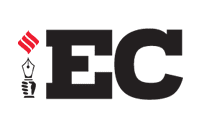By Maninder Bharadwaj, Vice President, Cybersecurity, Providence India
Evolution of trends in technology
Technology has come a long way, evolving from simple automation to advanced AI-driven solutions that are now reshaping industries. Artificial Intelligence (AI) and Machine Learning (ML) have emerged as pivotal forces, enabling autonomous decision-making. They are transforming processes across sectors, with adoption rates soaring from 50% to 72% globally1.
Evolution of trends in healthcare owing to technological advancements
In healthcare, these cutting-edge technologies are transforming patient care, operational efficiency, and sustainability. AI and ML drive predictive analytics for diagnostics and personalised medicine; quantum computing is expected to drive breakthroughs in diagnostics, precision medicine, and healthcare pricing by processing vast amounts of data with unprecedented speed; the integration of 6G enables real-time remote patient monitoring and enhances medical teamwork through augmented reality, revolutionising how care is delivered. Understandably, healthcare systems are increasingly adopting these technologies to improve care outcomes. However, the benefits of these technologies also come with risks, including the potential of targeted cybersecurity attacks. In 2023, global ransomware attack claims rose by 74% as compared to the previous year2.
According to Cyber Threat Intelligence Integration Center (CTIIC), the healthcare sector has been severely impacted, with ransomware attacks nearly doubling from 214 claimed victims in 2022 to 389 in 2023. All players in the healthcare ecosystem, including owners, operators and the government authorities must imperatively implement cybersecurity protections, zero trust architecture and public-private collaborations to enhance the security and resilience of the digital healthcare ecosystem3.
How cybersecurity innovations are shaping an ever-evolving healthcare industry:
Cybersecurity has consistently evolved alongside the healthcare industry, innovating, and reinforcing its defence systems. Below are some of the most transformative trends poised to impact how healthcare organisations approach cybersecurity:
- Strategic Imperatives for Unified Cyber Analytics: Large healthcare organisations often deploy multiple tools, processes and analytics to combat cyber threats. This results in isolated data across siloed locations, hampering decision-making and accuracy. Addressing these challenges, strategic imperatives for Unified Cyber Analytics mandate integrating these tools into a cohesive system. This creates a need for comprehensive knowledge of cybersecurity strengths and weaknesses in a healthcare ecosystem. Health systems are driving data driven decisions and strategic security investments by adopting smart Cyber Risk Quantification models and aligning their data with regulatory requirements and controls.
- Integrated governance, risk, and compliance (GRC) in healthcare: As providers continue to modernise and move to cloud environments, government regulations are expected to increase in number and become more stringent. It is important for GRC systems in healthcare to adopt dynamic risk and control mapping, driving agility, responsiveness and oversight across complex IT networks. Well-integrated and cohesive tools enable better GRC in healthcare and enhanced cyber resilience, with automated, pre-built integrations for seamless data sharing, evidence collection, and real-time security alerts.
- Proactive compliance will continue to streamline controls and enhance efficiencies: There continues to be increased focus on government regulations and greater scrutiny amid the growing cyber-attack threats. To address vulnerabilities within the healthcare ecosystem, organisations engage in continuous compliance monitoring, regularly test controls, and swiftly implement audit feedback. These compliance activities are integrated to align with organisational needs, legal requirements, and regulatory expectations. As systems interconnect through data, adopting an “assess once, satisfy many” compliance model can streamline processes.
- The Zero-Trust Security Model will evolve into an adaptive approach in healthcare covering both modern and legacy clinical devices, which continue to be in use until they provide active care and are a part of the patient’s life cycle. These devices, owing to their lengthy life span and high cost of replacement, require additional layers of security – provided by adopting zero trust principles without disrupting care delivery. Multi-factor authentication (MFA), Single Sign-On (SSO) and behavioural micro-segmentation of user activity are examples of adopting a layered security approach. While Zero-trust Security Model has been around for a decade, the healthcare industry will continue to actively adopt it across all its clinical devices.
- Cyber resilience through AI-driven ITDR: Information Technology Disaster Recovery (IT DR), an integral part of healthcare, helps detect early signs of disruptions, for example, unusual Electronic Health Records (EHR) access patterns. AI-driven predictive analytics, when integrated with ITDR, helps pre-empt system outages, optimise resource management, and ensure prioritised recovery for critical systems, while enabling rapid, automated responses to anomalies, and protecting patient data during and after a disaster.
- Biometric verification and authentication, alongside blockchain technology, is reshaping identity access and management (IAM): With advancements in AI-driven biometrics, including fingerprint, facial, and vein recognition, organisations are moving towards password-less authentication and 3D authentication systems. Adopting decentralised identities (DIDs) removes reliance on centralised patient data repositories and enhances privacy. DIDs reduce data breach risks by strictly limiting access to authorised entities.
- Process automation in user provisioning and access control will transform healthcare experiences for physicians, providers, and nurses: Future Identity and Access Management (IAM) systems will leverage cloud, advanced analytics and sophisticated algorithms to support real-time decision-making. Cloud-based IAM solutions offer scalable, secure, and flexible identity management, provisioning and governance, crucial for mobile and remote healthcare settings.
- Adaptive AI-driven entitlement management will continue to secure access with dynamic context-aware access control: With implementation of Cloud Infrastructure Entitlement Management (CIEM), organisations will be able to dynamically manage access permissions based on the latest security requirements. These solutions will incorporate advanced risk assessments and contextual analysis, allowing organisations to adjust access levels in real-time according to the user’s risk profile and the specifics of their access request. This enhances security by ensuring that access is granted only to the right people and continually adapts to emerging threats.
- Disaster Recovery as a Service (DRaaS) will continue to be an essential lifeline for the healthcare sector amid ever-evolving cyber threats. In an environment where patient information is priceless, DRaaS provides a strategic and cost-efficient solution for ensuring business continuity and data protection using cloud-based infrastructure to simplify disaster recovery processes. It enables healthcare organisations to swiftly recover from interruptions such as natural disasters, hardware malfunctions, or cyberattacks, thereby guaranteeing uninterrupted care and protecting patients’ lives.
The effectiveness and safety of healthcare delivery in a digital-first world are intrinsically linked to organisations’ capacity to withstand cyber threats. Cybersecurity is undoubtedly an essential, life-saving measure. The near future will continue to see health systems display a unified and steadfast commitment to cybersecurity to ensure robustness and resilience, as they honour their fundamental responsibility of safeguarding patients’ lives.

